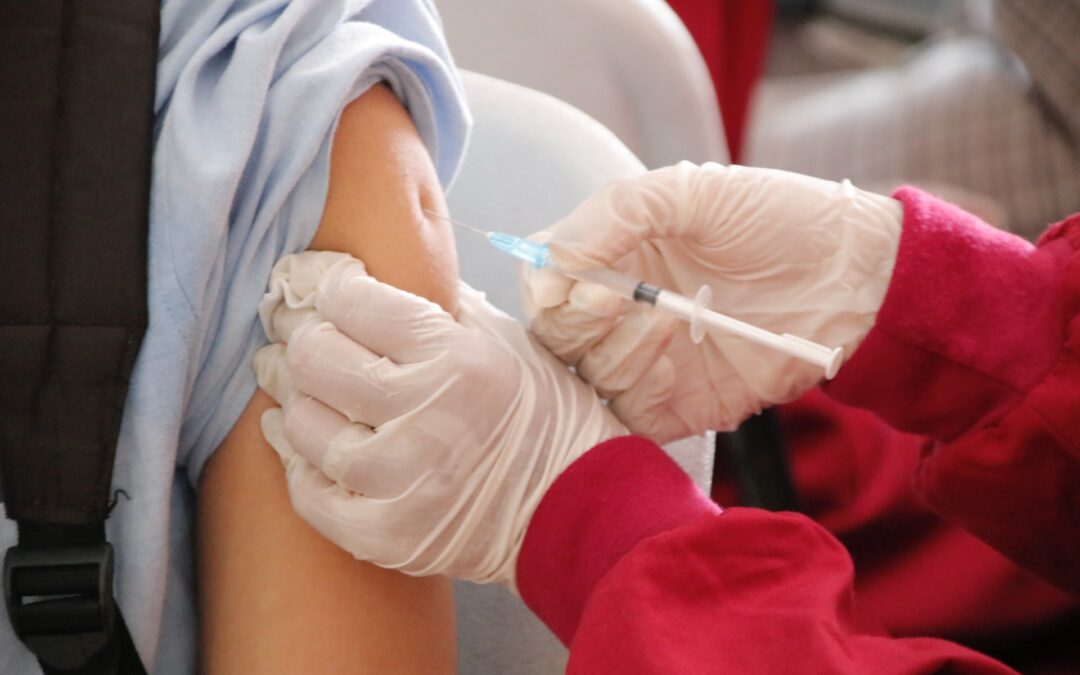Vaccines are widely recognized as one of the most significant achievements in public health. They have saved countless lives and considerably reduced the impact of various infectious diseases. In today’s rapidly evolving world, vaccination is more important than ever. The ongoing pandemic reminds us of the crucial role that vaccines play in protecting ourselves and our communities, mitigating the risk of disease transmission, and maintaining the well-being of our loved ones.
At In & Out Urgent Care, we understand the importance of staying up-to-date with your vaccinations. With clinics in Metairie, New Orleans, and Covington, we’re committed to providing accessible, high-quality healthcare services to help keep you and your family protected all year round. In addition to treating minor injuries and illnesses, we offer a range of essential vaccines that cater to the diverse needs of our clients. Whether you require an annual flu shot, a recommended travel vaccine, or an age-appropriate immunization, In & Out Urgent Care is here to ensure that your health is prioritized.
In this article, we’ll delve deeper into the world of vaccines and examine their history, how they work, and why they are so essential to safeguarding our health. We’ll also discuss the different types of vaccines available and address common misconceptions surrounding them. Finally, we’ll look at the important role that In & Out Urgent Care plays in providing accessible and efficient healthcare services, including vaccines, to the people of Metairie, New Orleans, and Covington.
We invite you to join us in our exploration of the fascinating world of vaccination, its impact on our health, and our shared responsibility to protect ourselves and our communities. As your go-to urgent care provider, In & Out Urgent Care is here to guide you every step of the way on the journey toward a healthier, safer future for all.
The History of Vaccines: A Timeline of Progress
The development of vaccines can be traced back to the late 18th century with Edward Jenner, an English physician considered the founder of smallpox vaccination. Jenner noticed that milkmaids who contracted cowpox, a less severe disease, seemed to be immune to the more devastating smallpox. In 1796, he famously tested this theory by inoculating an eight-year-old boy with pus from a cowpox sore. Subsequently, the boy showed immunity to a smallpox sample. This groundbreaking experiment led to the birth of modern vaccination.
Following Jenner’s breakthrough, the study of vaccines rapidly progressed. In the late 19th and early 20th centuries, scientists such as Louis Pasteur and Jonas Salk made significant advancements in developing vaccines for several diseases, including rabies and polio. Today, the use of vaccines extends to numerous illnesses like measles, hepatitis, and influenza, substantially reducing the toll of these infections on public health.
How Vaccines Work: The Science Behind Immunity
At the core of vaccination lies the human immune system, a remarkable defense mechanism that combats invading viruses and bacteria. When the body is exposed to an antigen, such as a virus or bacterium, the immune system kicks into action, producing proteins called antibodies that neutralize the threat. Once the invader is eradicated, the immune system retains a “memory” of the antigen, allowing for a rapid and effective response to future exposures.
Vaccines work by mimicking this natural process without causing a full-blown disease. They contain either weakened or inactive components of the pathogen or a harmless piece of its genetic material. When administered, the vaccine’s components trigger an immune response, generating antibodies and “training” the immune system to recognize and neutralize the real pathogen if encountered in the future.
Types of Vaccines: A Diverse Arsenal Against Disease
As our understanding of the immune system and pathogens advances, so does our ability to develop various types of vaccines. Below are some of the chief categories:
- Live Attenuated Vaccines: These vaccines use a weakened form of the pathogen that can still replicate but generally doesn’t cause disease in healthy individuals. Examples include the measles, mumps, and rubella (MMR) and the yellow fever vaccines.
- Inactivated Vaccines: These utilize whole viruses or bacteria that have been killed or inactivated, meaning they can’t replicate or cause disease but still provoke an immune response. Examples are polio, hepatitis A, and some influenza vaccines.
- Subunit, Recombinant, Polysaccharide, and Conjugate Vaccines: These vaccines comprise specific pieces of the pathogen, such as its protein, sugar, or a harmless piece of its genetic material. They require booster doses to maintain protection. Examples include the human papillomavirus (HPV), hepatitis B, and pneumococcal vaccines.
- Messenger RNA (mRNA) Vaccines: A recent advancement, these vaccines do not use live or inactivated pathogens. Instead, they introduce a small part of the pathogen’s genetic material (mRNA) into the body, prompting cells to produce a harmless protein fragment, which in turn stimulates an immune response. Examples are the Pfizer-BioNTech and Moderna COVID-19 vaccines.
Debunking Common Vaccine Myths
Despite their proven benefits, vaccines often encounter skepticism and misinformation. Here, we address some common misconceptions:
Myth 1: Vaccines cause autism – Numerous scientific studies have debunked this claim, and no credible evidence exists linking vaccines to autism or other developmental disorders.
Myth 2: Natural immunity is better than vaccine-acquired immunity – Acquiring immunity via natural infection often comes with a far greater risk of complications or severe outcomes, while vaccines provide protection with significantly less risk.
Myth 3: Vaccines contain harmful ingredients – The components in vaccines are carefully scrutinized, and their use is based on years of research and safety data. Trace amounts of substances like aluminum or formaldehyde exist in vaccines, but they occur at safe levels and pose no harm to the general population.
The Role of In & Out Urgent Care in Promoting Vaccination and Health
In & Out Urgent Care is committed to offering a wide range of essential vaccines to keep you and your community healthy. By providing an accessible, patient-centered healthcare solution, our clinics help ensure that staying up-to-date with your vaccinations is a seamless and stress-free experience.
Conclusion
Vaccines are a cornerstone of public health, playing an invaluable role in protecting individuals and communities from various diseases. By staying informed and keeping current with your vaccinations, you contribute to the well-being of society as a whole. In & Out Urgent Care is proud to be a part of this journey, offering reliable, accessible, and efficient healthcare services that prioritize the health of our cherished communities in Metairie, New Orleans, and Covington.

